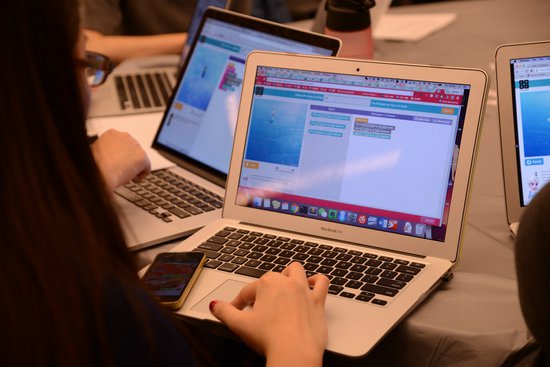ePortfolio Initiative

ePortfolio Initiative
ePortfolios allow students to collect, archive, and publish their work, as well as draw connections among different projects and integrate topics and themes across disciplines and semesters.
Linking social learning, integrative thinking, and adaptive reflection
An ePortfolio is a digital archive that represents student work over time through a broad range of artifacts.
An ePortfolio might include submitted course papers and projects in a variety of formats, works-in-progress, independent research, reflections on assignments, learning goals, ideas for future scholarship, and links to relevant resources. An ePortfolio can function as a C.V. to share with prospective employers, a venue for sharing academic work with family and friends, a tool for inviting collaboration and feedback, or a private log of academic progress.
Traditionally, ePortfolios have been adopted in teaching and learning to provide a space for students to collect their work and reflect on the connections visible to them. At their most basic, students might use an ePortfolio as a basic curriculum vitae, but an ePortfolio reaches its potential when used to build complex, detailed reflections on scholarly achievements and goals. This reflection can take place textually, visually, or multimodally.
What is the purpose and value of an ePortfolio?
Not only do ePortfolios serve a practical purpose by allowing students to collect, archive, and publish their work, they also help students to draw connections among different projects and to integrate topics and themes across disciplines and semesters. In selecting and organizing work to include in an ePortfolio, students are encouraged to envision the “big picture” of their academic journeys and to reflect on their overall goals and accomplishments. ePortfolios serve both a personal and a public function, helping students to synthesize work for themselves and allowing them to share that work with others.
Additionally, ePortfolios can benefit the university by allowing faculty and administrators to track student progress over time, both individually and collectively.
Georgetown ePortfolio Initiative
Reflective lifelong learning is at the core of Georgetown University’s mission. The University’s founding principle to promote intellectual, ethical, and spiritual understanding has been a constant through our changing times. As our enduring values continue to shape each generation of graduates, we strive to improve the environments that help our students become thoughtful, socially-conscious learners who are responsible stewards of their education.
The Georgetown University ePortfolio Initiative built coherence around three main principles: making reflection an integral part of learning (metacognition), making connections across courses and programs (integrative learning), and highlighting the social component of learning (social pedagogies). The initiative’s focus on principles that are consistent with the University’s ideals and values is expressive of the unique character of the Georgetown University ePortfolio Initiative.
During the initial phase of Georgetown’s ePortfolio Initiative, ePortfolios were already being used in a variety of contexts. For example:
- Students in Betsi Stephen’s STIA honors program in the School of Foreign Service create ePortfolios which allow them to synthesize the interdisciplinary work that they have done over the course of their degree at Georgetown.
- Adam Rothman uses what we describe as the "hub and spoke" model in his history courses, which combines a course blog and ePortfolios to encourage students through a synthesis of collaboration and ownership. This integration of shared (the course blog) and individual (each ePortfolio) gives students a chance to participate on multiple levels as well as complete the course with an ePortfolio to continue to build up or share.
Example: Robynne Mellor, History grad student, research/portfolio blog - As students in the Masters in Nursing Education program approach the end of their time in the program, they are required to build a portfolio to document their nursing education credentials and reflect on their growth as practitioners. While some students choose to create a traditional paper portfolio, others like Katherine elect to create an ePortfolio for its accessibility.
Example: Katherine Cargill, Nursing (CCNS)
For more examples of ePortfolios and a fuller description of some popular ePortfolio models, please see the Commons page on ePortfolios.
ePortfolio Technology: Tools for Creating ePortfolios
ePortfolios can take a variety of forms, and many different tools can be used to create them. The Georgetown ePortfolio Initiative focuses on two software programs for creating ePortfolios:
- Blogs: WordPress blogs provide a simple way to bring together the various elements of an ePortfolio. Through the Georgetown University CNDLS Course Sites, Georgetown’s online space for collaboration and communication tools, students and faculty can explore examples of ePortfolio blogs and can adapt existing templates for their own use. As many students already use CNDLS Course Sites in courses, learning to use an ePortfolio blog requires little effort.
- Digication ePortfolios: We are also piloting the Digication ePortfolio system at Georgetown. Digication offers a rich environment specifically structured to encourage thoughtful ePortfolio creation, and features designed for faculty offer incentive to use Digication ePortfolios at the course or curricular level. For more information about Digication ePortfolios, please email Anna Kruse.
Resources / Bibliography
- http://ncepr.org/
- http://www.eportfolio.lagcc.cuny.edu/ (LaGuardia Community College ePortfolio site)
- http://electronicportfolios.org/ (Helen Barrett)
- http://www.eportfolio.lagcc.cuny.edu/bibliography.html
Electronic Portfolios 2.0: Emergent Research on Implementation and Impact
Edited by Darren Cambridge , Barbara Cambridge , Kathleen Blake Yancey
Stylus, March 2009 - What Web 2.0 Can Teach Us About Learning by Edward J. Maloney
- Academic Commons: “It Helped Me See a New Me”: ePortfolio, Learning and Change at LaGuardia Community College” by Bret Eynon
- Making Common Cause: Electronic Portfolios, Learning, and the Power of Community by Kathleen Yancey, Barbara Cambridge, and Darren Cambridge
- “The Future of ePortfolio” Roundtable by Bret Eynon
- Electronic Portfolios: a Path to the Future of Learning by Randy Bass and Bret Eynon in Wired Campus blog



